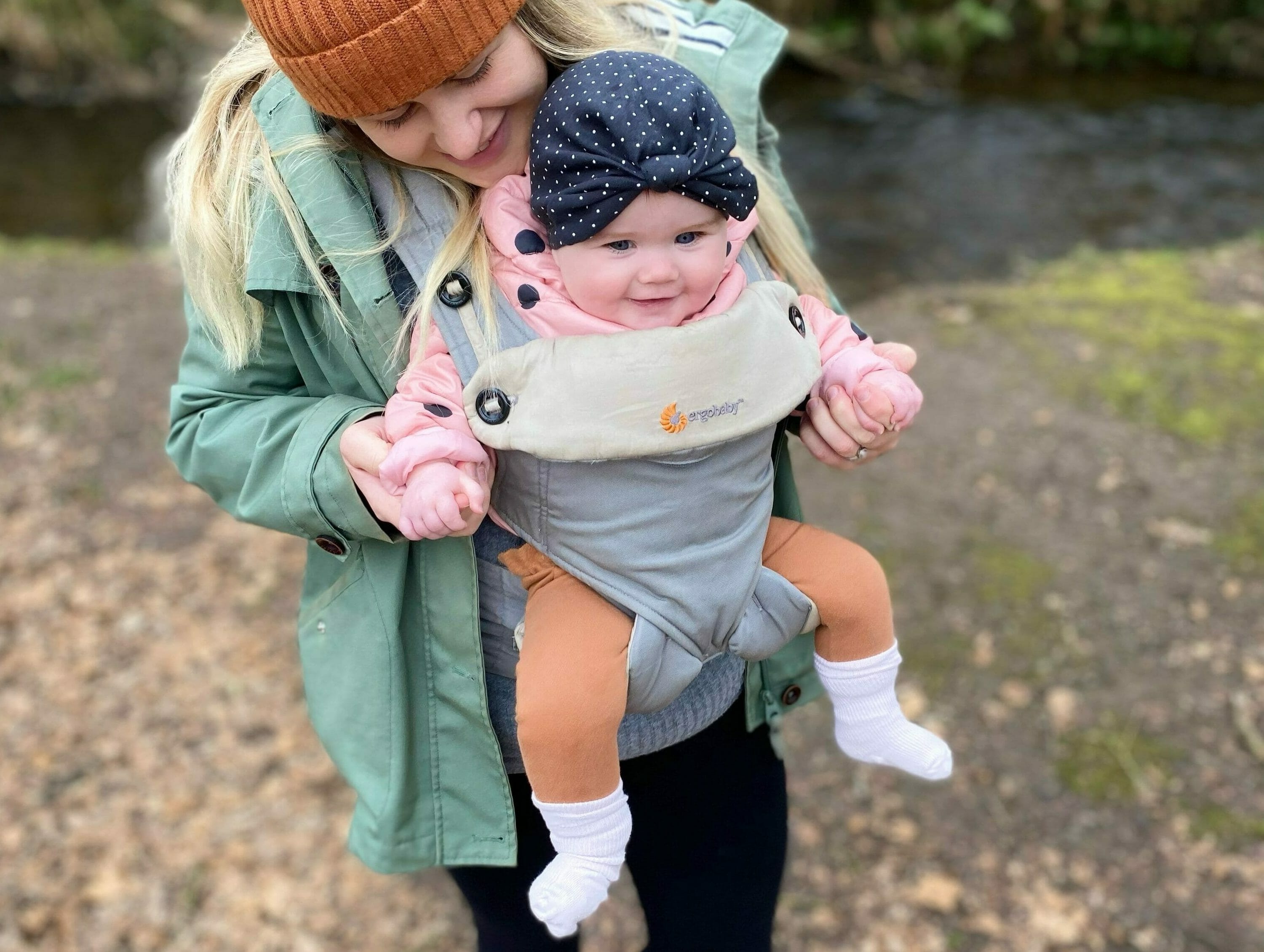
Babywearing and Developmental Hip Dysplasia
According to the NHS, Developmental Dysplasia of the Hip (DDH) is a condition where the "ball and socket" joint of the hip does not properly form in babies and young children. About 1 or 2 in every 1,000 babies have DDH that needs to be treated.
All baby's hips are checked as part of the newborn physical examination (usually within 72 hours of being born) so you should know early on if there are any suspected problems but you can check out the NHS information and advice here if you have any concerns.
Babies with Hip Dysplasia may well need treatment and it is especially important that their hips are kept in a stable position and any products such as baby carriers and sleep products support them ergonomically.
All Ergobaby carriers are designated hip healthy by the International Hip Dysplasia Institute (you can see a list of all hip healthy products here on their website) as they support baby in a hip-healthy “M” shape position, at all stages and in all positions, including outward-facing. You can see how this should look below:

Baby's knees should be higher than their bottom, which should be sat deep in the bucket seat.
A great way to make sure baby is always seated in a hip-healthy "M" shape is to do a pelvic tuck... this is a game-changing move that not only ensures ergonomic positioning but supports baby's weight more evenly, which lightens the load for whoever is carrying them. It's also important that all our carriers are used correctly, e.g. switching to the grey buttons for outward facing (or having the sliders pushed all the way down on the Omni 360 Cool Air Mesh), and making sure the correct panel width is selected on the waistbelt for your baby's size - there are handy velcro tabs with instructions on all our carriers to help make this as easy as possible for the parents and carers using them.
Brittany and Rosie's Story
After our eldest daughter Rosie, 4, was diagnosed with DDH (Developmental Hip Dysplasia) at birth, we knew we wanted only the best baby carrier on the market for our 7-month-old Hettie.
Rosie had severe DDH and has had four operations so far to correct the condition. Although Rosie’s DDH was not caused by an ill fitting baby carrier, we have learnt that wearing a supportive, ergonomic ‘frog-legged’ baby carrier can prevent hip dysplasia from getting worse. Medical research highly discourages ‘dangling’, unsupportive baby carriers and advises that baby’s hips and legs should be ergonomically positioned. We took the time to research the best baby carrier for Hettie and with the help of DDH Facebook community groups, we were led straight to the Ergobaby carrier.
It’s very quick and easy to put on un-aided whilst the comfort and support is enjoyed by both myself and Hettie. I can’t recommend its safe, ergonomic comfort enough!
Gemma and Elodie's Story
My little girl, Elodie, was diagnosed with DDH at 7 days old and was fitted with her Pavlik Harness at 8 days old. I broke down, as a first time mum it is massively overwhelming and there are so many things you have to adapt to when your baby arrives.
The diagnosis, at such an early age, just added an extra level of complexity and confusion to the whole “motherhood” ride. There are so many things you need to adapt to when your little one is wearing a Pavlik harness; nappy changes, play time, cuddles, feeding, getting dressed, to name a few.
With Elodie’s diagnosis, amongst the plethora of adaptations we had to make, one thing which didn’t change was the ability to use my Ergobaby Embrace. I felt empowered to wear Elodie, knowing that it was completely hip healthy and wouldn’t do anything to interfere with her treatment. Elodie was fortunate to only be in her harness for 7 weeks, yet in those 7 weeks, she spent most of her time on me being worn as I was completely confident that I had chosen a product which was working with us on our journey.

You can read more about Gemma and Elodie's journey over on Nappies and All-Nighters
Two important thing all parents should know is that one - DDH cannot be prevented so it is nobody's fault, and two - if your baby has been diagnosed with hip dysplasia, you are not alone. Steps is the leading charity working for all those whose lives are affected by childhood lower limb conditions. Everything they do is about valuing and supporting individuals, families and carers affected by conditions which have an impact on the legs, hips or feet. The International Hip Dysplasia Institute also has a wealth of information for parents and carers on DDH.




















